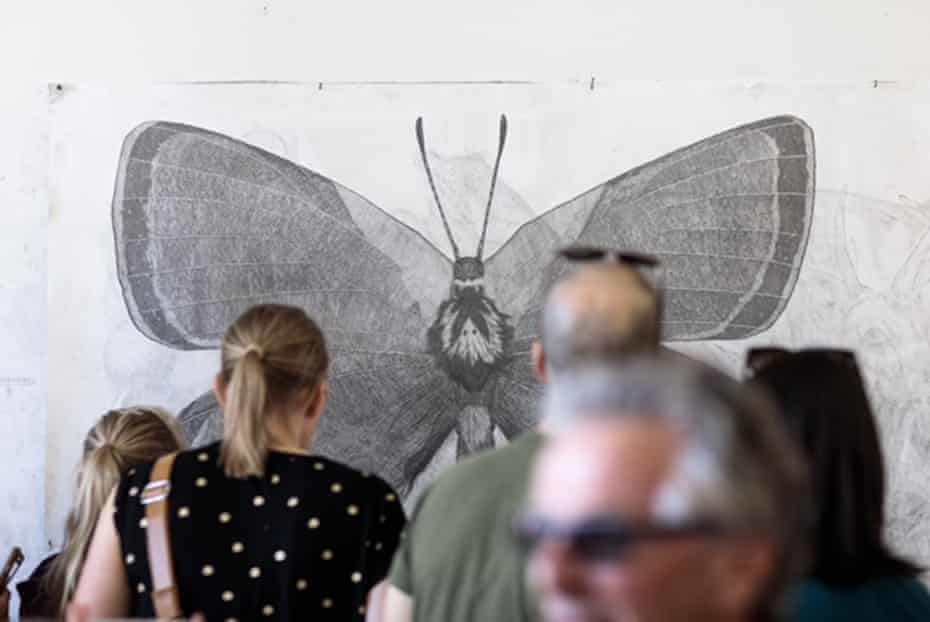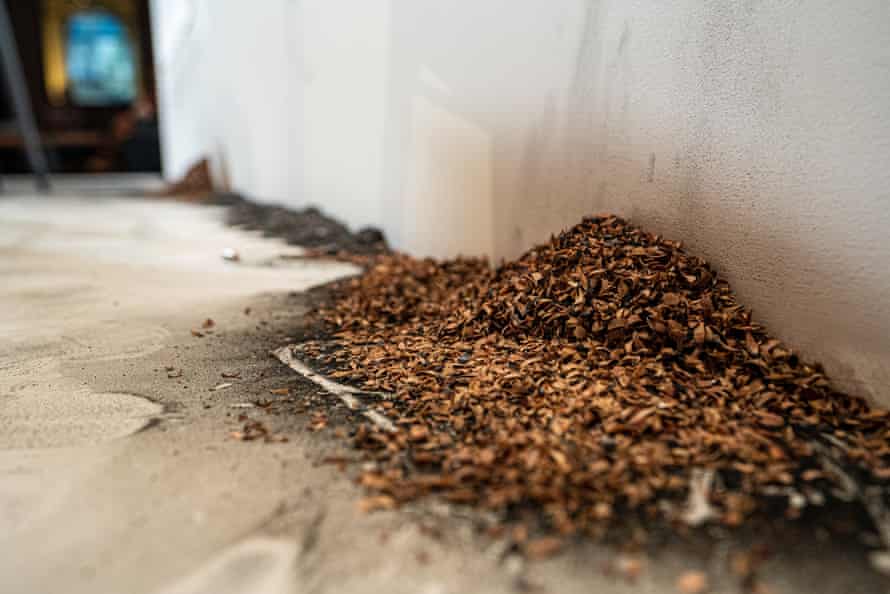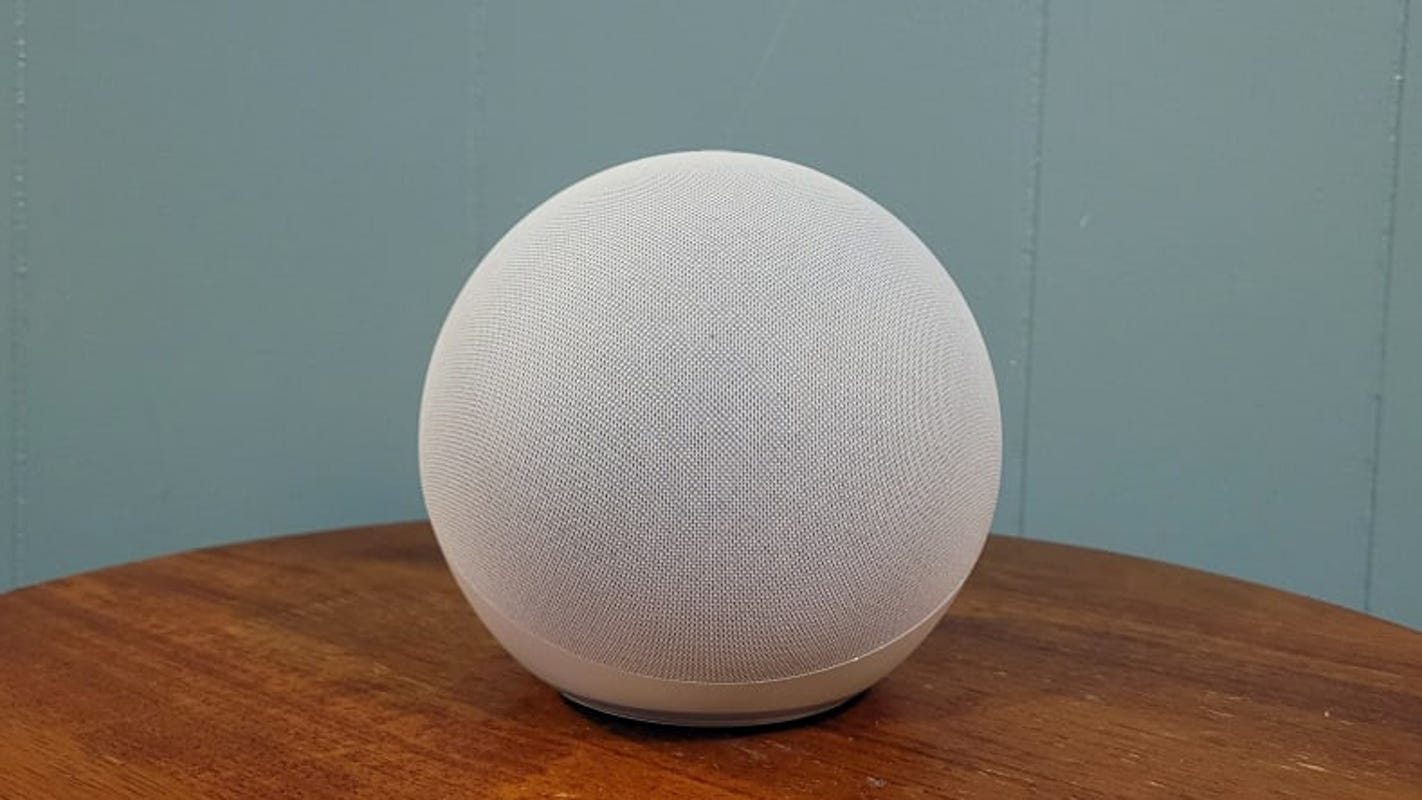‘I almost cracked’: 16-month artistic performance of mass extinction comes to a close
The Tasmanian Museum and Art Gallery in Hobart is crammed with folks ready for the swift parrot to disappear.
Hobart artist Lucienne Rickard has spent 5 weeks drawing a large-scale pencil sketch of the critically endangered chicken. Picking up her eraser, she tells her viewers, “If we don’t do something soon, this is what will happen.”
The erasure, which happened on Sunday as half of Mona Foma, marked the end result of Rickard’s Extinction Studies. The artist had spent 16 months in TMAG, meticulously drawing an archive of misplaced species: deer and crayfish, mice and turtles, bats and bilbies. When they had been carried out, she would rub them out.
The lifelike parrot is perched above the bottom on its paper canvas: the final animal to go.
Below it lies the stays of all former black-and-white drawings: shavings from 25 erasers, which had eliminated 187 graphite pencils’ price of artwork. In a couple of minutes, this chicken will grow to be half of the waste.
Rickard begins with the swift parrot’s feathery tail, wiping it clear from the web page with deliberate strokes. The creature begins to vanish. From the silence, somebody whispers: “It’s like witnessing a funeral.”
“We have this idea that extinction is an old problem. In fact, the opposite is true,” Rickard tells the Guardian. Throughout the mission she has created and destroyed a whole of 38 works of artwork, all depicting wildlife from the IUCN Red List of Threatened Species, amongst them the Yunnan lake newt, the corquin robber frog and the big-eared hopping mouse.
Rickard’s drawings are life like, detailed, archival – precisely the fashion a customer may count on to discover in a museum. Keeping her artwork accessible grew to become a “hook” to draw folks into her world.
Using the identical piece of paper for months at a time, Rickard drew creatures that not thrive, the shadow of a former species underneath every new sketch. Eight of these species had been Australian. “We’re repeating the same mistakes over and over again, and not learning,” she says.
The concept for the mission – which was commissioned by Hobart’s Detached Cultural Organisation – developed from Rickard’s curiosity in nature documentaries. She started to educate herself about conservation, shocked by “how desperate it really is”.
“I thought, ‘if I don’t know about this, there are a whole bunch of other people out there who probably don’t know as well’.”
Most resonant for her was the delivery and loss of life of Rickard’s Xerces blue butterfly. She’d seen a wing underneath a museum microscope and located its element “mind-blowing … like an endless forest or landscape”, she tells the Guardian.
Informed by science, Rickard drew wings with an estimated 113,000 scales – a three-month course of she describes as “torturous”, and which she documented in a collection of posts on Instagram.
“I’m investing so much in this one drawing, this one species, because I’m getting frustrated,” she wrote in a single. “There is infinite exquisite detail all around us, but we’ve become used to seeing ourselves as removed from the natural world … I want to shake people. I want to yell, ‘Look!’ But I’m drawing every last scale instead.”
People following her progress pleaded together with her to cancel the butterfly’s erasure; to make an exception for the butterfly residing on the web page. Her dad and mom utilized comparable stress, lamenting their daughter’s efforts with the wings.
“There was a heightened atmosphere in the room when I erased it, and I almost cracked,” Rickard remembers. It was the “sting” of this erasure that gave it energy.

Rickard started the mission at TMAG in September 2019, and continued as bushfires ravaged the nation, impacting more than 100 threatened Australian species and killing or displacing almost 3 billion animals. She says museum guests would come to her in tears, crying for the loss of wildlife as she continued to confront it on her web page.
Just a few months earlier, Covid-19 lockdowns appeared to return relative peace to the pure world: marine wildlife flourished in quieter waters and blue skies were seen above cities usually clouded with air pollution. Rickard remembers this second as a chance”: “A good time to have a think about our relationship to the environment, and try to live different lives.” It didn’t take: the pandemic was threatening our own species, and our values shifted accordingly.
Rickard believes a bigger downside is the environmental impression of “colonialism and capitalism” – significantly in Australia, which has the world’s highest rate of mammalian extinction. In the previous two centuries, greater than 100 native species have been misplaced.
“Australia sells itself to the rest of the world based on tourism, and our incredible wild spaces and wildlife. Why aren’t we looking after our natural heritage?”

Rickard endured difficult conversations through her social media page and physical presence in TMAG. It’s the first time she has worked in a public space, crossing from page to performance and venturing into the political.
“It’s one of the most gratifying things I’ve ever done in my art career – in my life – because it’s an issue relevant to everyone,” Rickard says.
“We need to get the message across that we have a whole bunch of species on the edge. And if we don’t do something, we will lose them.”
Despite the nature of her work, Rickard doesn’t intend to leave viewers in distress. Instead, she advises us to ask ourselves: “How can I take really good care of all the animals and plants around me?”
The question is not without hope. In the week of Rickard’s final erasure, the City of Hobart announced a program encouraging “citizen scientists” to log backyard sightings of the critically endangered eastern barred bandicoot. The short-tailed rain crayfish, previously declared extinct, was rediscovered on the island’s west coast. And on Maria Island, researchers hope to foster an “insurance population” of the threatened brush-tailed rock wallaby.
When Rickard erases her swift parrot, she allows remnants of the sketch to remain on her page. It’s a moving call-to-action for a species “we can still do something about”.
“We need to look at these critically endangered species and admit that we’re not looking after them. The swift parrot is a really iconic Tasmanian species. Hopefully, we keep that little guy around for a bit longer.”



